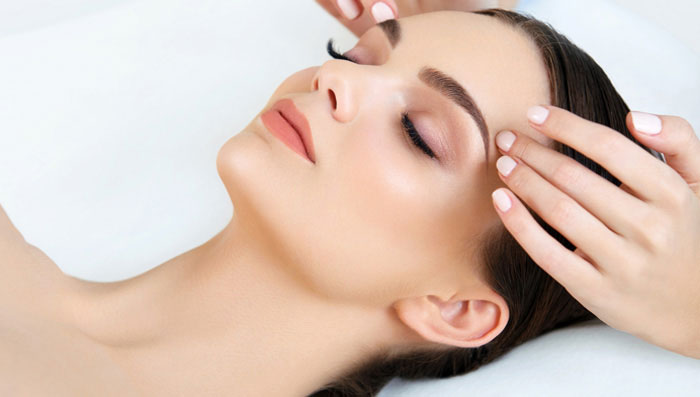
The Case for Adding Medical Aesthetic Practice & Winning

Is Your Practice Leaving Money on the Table by Not Adding Aesthetics?
Our population is getting older. In short, your patients are actively seeking innovative ways to stay healthier, live longer and look younger without the risk of surgery. As a medical practice, if you haven’t explored the options of adding aesthetics to serve your patients – and amp up your practice revenue along the way – you are behind the competitive curve.
Even without your patients actively asking you about the latesthigh tech treatments and fillers, there are plenty of challengesin the physician office that drive medical practices to seriously evaluate new sources of revenue – shrinking reimbursements, increasingreporting requirements around safety, quality and the patient experience and uncertainty over what is next for the Patient Protection and Affordable Care Act (PPACA).
Adding high tech aesthetics solutions such as lasers, supplementing with Botox and fillers, and introducing a cosmeceutical line can add a significant boost to the bottom line of any medical practice. Take Diamond Skin ID as an example – a primary care practice that has added aesthetics services based on patient demand and the need to increase their top line revenue. For Dr. Shahan Chowdhury, adding medical aesthetics made complete sense in terms of growing the patient/doctor relationship across not only medical health but also aesthetic health for her primary care practice in 2017. Dr. Chowdhury shared that “ Our clients want to feel good and look good too. Even with the best diets, sleep, and exercise, an aesthetic intervention is sometimes needed for our clients.” By adding a precise offering of aesthetics services, Diamond Skin ID saw their monthly revenues lift by more than 200%. Dr. Shahan Chowdhury reveals that introducing medical aesthetics can be very profitable, however, she cautions all potential physicians to complete their due diligence and have a solid marketing strategy prior to buying the latest lasers on the market or be prepared to go bankrupt.
By adding in the aesthetics services to her primary care practice, her patients have access to a “one stop shop” to address both their health and beauty concerns that are minimally invasive and don’t require a scalpel and surgery.
The demand for these services and products remains extraordinarily high for non-surgical aesthetic services. With high demand and barriers to entry relatively low, (particularly for the non-invasive services and cosmeceutical products), aesthetics isa “must consider” for growing client relationships and adding new revenue streams.
Aesthetics By The Numbers
In 2015, the American Society for Aesthetic Plastic Surgery (ASPS) fielded perhaps one of the largest studies on plastic surgery ever. The study quantifiedthe increases in volumes for plastic surgery (both surgical and non-surgical) overall and by procedure.
The 2015 ASPS survey estimated that a total of 10,879,909 non-surgical procedures were performed by physicians in their offices. Injectables, such as Botulinum Botox and Hyaluronic Acids, Juvederm, restylane, etc. made up the largest percentage of these procedures.
Moving fast and right behind the Botox/filler segment are high tech lasers and other tools. Non-surgical skin tightening procedures increased by 58% and injectables by 21%.

Strong Patient Relationships = Return Patients
Most Americans still have a great deal of confidence in their doctors.The Gallup Organization’smost recentpoll estimates that 65% of Americans report either high or very high confidence in their doctors.
The convenience of being able to have these procedures performed by a physician, supported by staff in an office with which the patient is already familiar and comfortable is another reason to consider adding these procedures to your practice. Consumers, pressed by family, work and social obligations, may be receptive to the convenience of having these procedures in an already-familiar environment. Also, the assurance of a board-certified physician vs. an aesthetic technician from a typical med spa attracts more interests for the service. Let alone the fact that a family physician can supervise the choice of aesthetic treatment plans for each patient to maximize the chance of more sustainable results.
Barriers To Entry Are Low
Thepatient demand is high and the growth curve for non-invasive aesthetic demand appears to be staggering. Consumers are vulnerable to societal pressures to look their best and now they have turned to their physician and trusted advisor for information on aesthetic procedures. Physicians can find a relatively short path with minimal barriers to the introduction of non-invasive procedures to their practice. Our future blogs will discuss more on how.
Educational seminars to introduce the products, as well as the best and safest practices for their use, are as frequent as they are abundant. The introduction of non-invasive services requires virtually no additional office space and very little in the way of equipment and supplies. Perhaps the most appealing feature is that virtually all of these procedures are cash pay services that eliminate the need to negotiate insurance company red tape, and resulting in a quicker contribution to the practices’ bottom line.

Section 179 Tax Savings for Medical Equipment
Another arsenal in the doctor’s practice toolkit should be Section 179 of the IRS tax code that allows business owners to deduct a significant portion of qualifying equipment. This equipment tax relief may be the motivator to get equipment sooner than later to ultimately grow the practice and stay competitive by reinvesting in the practice. Section 179 calls for an entire blog post on itself, so stay tuned.
Make Your Move
Given the relatively low cost of entry into the non-invasive aesthetics marketplace, the boost to practice revenue could make the addition to apractice worthwhile. There are multiple strategies to introduce aesthetics into a practice – build it from scratch, join a partnership or obtain a medical serviceoffering (MSO) model. Each option has pluses and minuses and requires a strategic business plan before adoption.
Let’s be clear: if it was easy, no risk involved and required limited cerebral analysis, anyone could enter this space. It’s going to take a pragmatic, agile and knowledgeable team to make this happen. Dr. Chowdhury chose to build the business with an MSO likepractice consulting partner. Such a partner like Medology360 can help you to develop your aesthetics roadmap, calculate your funding needs, develop a tools and resource plan and most importantly, investment recovery time.
If you find this post intriguing, feel free to reach out to Medology360 to understand the economics of adding aesthetics to your practice (May it be family medicine, dermatology, plastic surgery, dentistry, etc.), risk and compliance considerations, staffing and the art of digital marketing to help you to thrive in this “unlikely” specialty. You can also reach out to Dr. Chowdury through her new extension at Diamondskinid for further perspectives. Remember, a decision to take action or no action results in defining your place with today’s complicated Healthcare providers market. A bit of investigative time will be well worth it as the aesthetic addition may help you to ride out this turbulent times ridden with uncertainties.
